Accommodation · Chile · Hotels · Regions · South America
6 remarkable facts you may not know about Easter Island
Easter Island or Rapa Nui as the locals call it, requires a long journey and only one plane can fly there at a time, but it is one of the most remarkable places to visit and has an equally incredible story to match.
 1. It is the most remote island in the world
It is situated on one corner of the Polynesian Triangle in the Pacific 3,700 km from Chile in one direction and 4,200 km from Tahiti in the other. It was discovered on Easter Day by the Dutch 50 years before Cook arrived in 1774 and there is only one town on the island where most of its 6,000 inhabitants live, from just 36 ancestral families.
1. It is the most remote island in the world
It is situated on one corner of the Polynesian Triangle in the Pacific 3,700 km from Chile in one direction and 4,200 km from Tahiti in the other. It was discovered on Easter Day by the Dutch 50 years before Cook arrived in 1774 and there is only one town on the island where most of its 6,000 inhabitants live, from just 36 ancestral families.
 2. It has one of the longest runways in the world
Although remote, it is also home to one of the longest runways in the world (with all sorts of conspiracy theories and Close Encounters stories, no doubt prompted by Erich von Däniken’s hypothesis of an alien visitation on the island in his book Chariots of the Gods). It was however built by the Americans and funded by NASA as a potential landing place for The Challenger Space Shuttle back in the 1980s.
3. The excursion vehicle is a mini theatre
Arguably the best hotel on the island is the Hare Noi located on a hillside with nine lodges connected by wooden walkways and overlooking the Pacific. The ‘Hares’ are made almost entirely from the natural materials available on the island; tree trunks, rocks, woven reeds and thick branches to form the railings on the spacious terraces. Very rustic, very well designed and extremely comfortable.
2. It has one of the longest runways in the world
Although remote, it is also home to one of the longest runways in the world (with all sorts of conspiracy theories and Close Encounters stories, no doubt prompted by Erich von Däniken’s hypothesis of an alien visitation on the island in his book Chariots of the Gods). It was however built by the Americans and funded by NASA as a potential landing place for The Challenger Space Shuttle back in the 1980s.
3. The excursion vehicle is a mini theatre
Arguably the best hotel on the island is the Hare Noi located on a hillside with nine lodges connected by wooden walkways and overlooking the Pacific. The ‘Hares’ are made almost entirely from the natural materials available on the island; tree trunks, rocks, woven reeds and thick branches to form the railings on the spacious terraces. Very rustic, very well designed and extremely comfortable.
 The Hare Noi vehicle for excursions is a flat bed truck with three rows of comfortable seats constructed theatre style. A perfect way to experience the beautiful island, famous for its 900 Moai scattered across the lush volcanic landscape – less the one the British stole in 1860 and presented to Queen Victoria, now in the British Museum.
The Hare Noi vehicle for excursions is a flat bed truck with three rows of comfortable seats constructed theatre style. A perfect way to experience the beautiful island, famous for its 900 Moai scattered across the lush volcanic landscape – less the one the British stole in 1860 and presented to Queen Victoria, now in the British Museum.
 4. The Moai can weigh up to 60 tons
The Moai were carved from tuff, a compressed volcanic ash found on the Rano Raraku volcano, where 394 Moai in varying stages of completion are still visible today. The early Moai were 4m high and weighed in at 12.5 tons but as the competition to erect the biggest and best intensified so their size increased. The largest on the island is 20m high and estimated at 60 tons, although it was never fully excavated from the ground at Rano Raraku. The Rapa Nui people had a top knot in their hair, they still do, it is known as a Pukao. So, they chiselled huge Pukao from red volcanic rock to be lifted onto the Moai’s head.
4. The Moai can weigh up to 60 tons
The Moai were carved from tuff, a compressed volcanic ash found on the Rano Raraku volcano, where 394 Moai in varying stages of completion are still visible today. The early Moai were 4m high and weighed in at 12.5 tons but as the competition to erect the biggest and best intensified so their size increased. The largest on the island is 20m high and estimated at 60 tons, although it was never fully excavated from the ground at Rano Raraku. The Rapa Nui people had a top knot in their hair, they still do, it is known as a Pukao. So, they chiselled huge Pukao from red volcanic rock to be lifted onto the Moai’s head.
 5. The Moai ‘walked’ across the island
How they were moved from the volcanic quarry to the perimeter of the 163 sq km island where the tribes were living was explained by the eminent American archaeologist Terry Hunt. He discovered that the base of the Moai was carved to allow it to lean forward slightly, which allowed a pendulum walking action. Teams on either side would control the swaying motion as it walked pivoting from side to side and a team at the back stopped the edifice from toppling over. In 2012 he proved his theory with a 5 ton replica and with just 18 men ‘walked’ the Moai 100m in just 40 minutes.
5. The Moai ‘walked’ across the island
How they were moved from the volcanic quarry to the perimeter of the 163 sq km island where the tribes were living was explained by the eminent American archaeologist Terry Hunt. He discovered that the base of the Moai was carved to allow it to lean forward slightly, which allowed a pendulum walking action. Teams on either side would control the swaying motion as it walked pivoting from side to side and a team at the back stopped the edifice from toppling over. In 2012 he proved his theory with a 5 ton replica and with just 18 men ‘walked’ the Moai 100m in just 40 minutes.
 6. The Rapa Nui population declined to just 111
As the competition to create the largest and therefore most powerful Moai intensified so the tribes sabotaged their rival’s Moai. After all the Moai had fallen the Rapa Nui people believed they were no longer protected and so it proved. The Spanish and the mainland Chileans came to Rapa Nui and took many of the locals as slaves, leaving behind disease, sickness and infection, by 1888 the 20,000 population had been decimated to just 111.
6. The Rapa Nui population declined to just 111
As the competition to create the largest and therefore most powerful Moai intensified so the tribes sabotaged their rival’s Moai. After all the Moai had fallen the Rapa Nui people believed they were no longer protected and so it proved. The Spanish and the mainland Chileans came to Rapa Nui and took many of the locals as slaves, leaving behind disease, sickness and infection, by 1888 the 20,000 population had been decimated to just 111.
 It wasn’t until 1956 when Thor Heyerdahl, who sailed the Kon-Tiki expedition, came to the island that the first Moai was restored. It was re-erected where the Polynesian king first came ashore and discovered the island. Since then some of the ‘Abu’ platforms have been recreated and Moai returned to their dignified position protecting the remaining Rapa Nui people on the island.
David Moore is Author of ‘Turning Left Around the World’. Published by Mirador and available from Amazon, it is an entertaining account of David and his wife’s travel adventures – often intriguing, frequently funny and occasionally tragic.
If you would like to be a guest blogger on A Luxury Travel Blog in order to raise your profile, please contact us.
It wasn’t until 1956 when Thor Heyerdahl, who sailed the Kon-Tiki expedition, came to the island that the first Moai was restored. It was re-erected where the Polynesian king first came ashore and discovered the island. Since then some of the ‘Abu’ platforms have been recreated and Moai returned to their dignified position protecting the remaining Rapa Nui people on the island.
David Moore is Author of ‘Turning Left Around the World’. Published by Mirador and available from Amazon, it is an entertaining account of David and his wife’s travel adventures – often intriguing, frequently funny and occasionally tragic.
If you would like to be a guest blogger on A Luxury Travel Blog in order to raise your profile, please contact us.
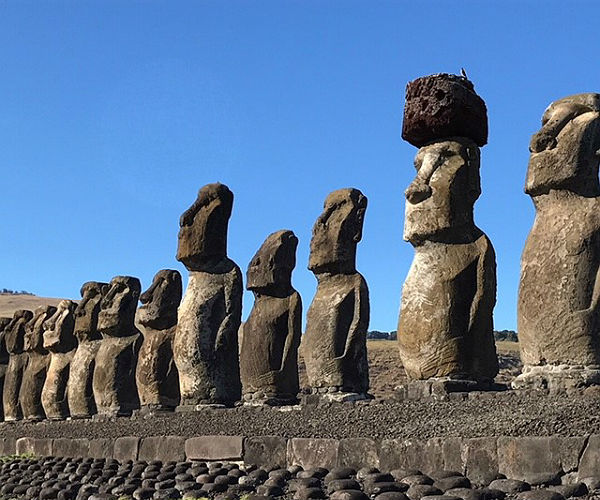 1. It is the most remote island in the world
It is situated on one corner of the Polynesian Triangle in the Pacific 3,700 km from Chile in one direction and 4,200 km from Tahiti in the other. It was discovered on Easter Day by the Dutch 50 years before Cook arrived in 1774 and there is only one town on the island where most of its 6,000 inhabitants live, from just 36 ancestral families.
1. It is the most remote island in the world
It is situated on one corner of the Polynesian Triangle in the Pacific 3,700 km from Chile in one direction and 4,200 km from Tahiti in the other. It was discovered on Easter Day by the Dutch 50 years before Cook arrived in 1774 and there is only one town on the island where most of its 6,000 inhabitants live, from just 36 ancestral families.
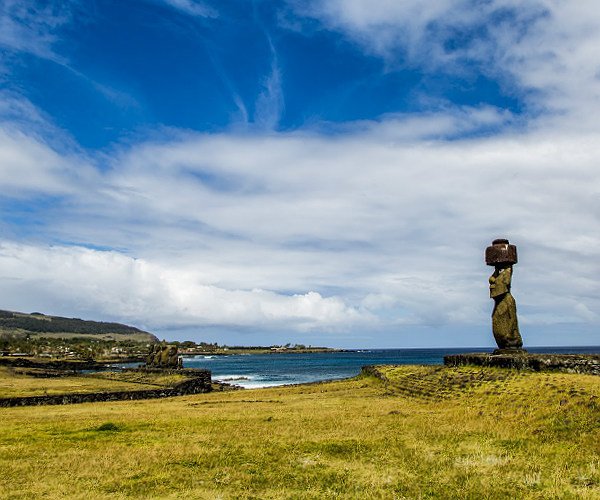 2. It has one of the longest runways in the world
Although remote, it is also home to one of the longest runways in the world (with all sorts of conspiracy theories and Close Encounters stories, no doubt prompted by Erich von Däniken’s hypothesis of an alien visitation on the island in his book Chariots of the Gods). It was however built by the Americans and funded by NASA as a potential landing place for The Challenger Space Shuttle back in the 1980s.
3. The excursion vehicle is a mini theatre
Arguably the best hotel on the island is the Hare Noi located on a hillside with nine lodges connected by wooden walkways and overlooking the Pacific. The ‘Hares’ are made almost entirely from the natural materials available on the island; tree trunks, rocks, woven reeds and thick branches to form the railings on the spacious terraces. Very rustic, very well designed and extremely comfortable.
2. It has one of the longest runways in the world
Although remote, it is also home to one of the longest runways in the world (with all sorts of conspiracy theories and Close Encounters stories, no doubt prompted by Erich von Däniken’s hypothesis of an alien visitation on the island in his book Chariots of the Gods). It was however built by the Americans and funded by NASA as a potential landing place for The Challenger Space Shuttle back in the 1980s.
3. The excursion vehicle is a mini theatre
Arguably the best hotel on the island is the Hare Noi located on a hillside with nine lodges connected by wooden walkways and overlooking the Pacific. The ‘Hares’ are made almost entirely from the natural materials available on the island; tree trunks, rocks, woven reeds and thick branches to form the railings on the spacious terraces. Very rustic, very well designed and extremely comfortable.
 The Hare Noi vehicle for excursions is a flat bed truck with three rows of comfortable seats constructed theatre style. A perfect way to experience the beautiful island, famous for its 900 Moai scattered across the lush volcanic landscape – less the one the British stole in 1860 and presented to Queen Victoria, now in the British Museum.
The Hare Noi vehicle for excursions is a flat bed truck with three rows of comfortable seats constructed theatre style. A perfect way to experience the beautiful island, famous for its 900 Moai scattered across the lush volcanic landscape – less the one the British stole in 1860 and presented to Queen Victoria, now in the British Museum.
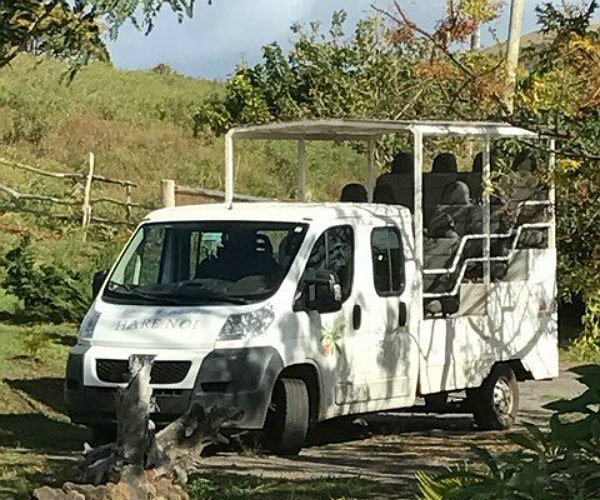 4. The Moai can weigh up to 60 tons
The Moai were carved from tuff, a compressed volcanic ash found on the Rano Raraku volcano, where 394 Moai in varying stages of completion are still visible today. The early Moai were 4m high and weighed in at 12.5 tons but as the competition to erect the biggest and best intensified so their size increased. The largest on the island is 20m high and estimated at 60 tons, although it was never fully excavated from the ground at Rano Raraku. The Rapa Nui people had a top knot in their hair, they still do, it is known as a Pukao. So, they chiselled huge Pukao from red volcanic rock to be lifted onto the Moai’s head.
4. The Moai can weigh up to 60 tons
The Moai were carved from tuff, a compressed volcanic ash found on the Rano Raraku volcano, where 394 Moai in varying stages of completion are still visible today. The early Moai were 4m high and weighed in at 12.5 tons but as the competition to erect the biggest and best intensified so their size increased. The largest on the island is 20m high and estimated at 60 tons, although it was never fully excavated from the ground at Rano Raraku. The Rapa Nui people had a top knot in their hair, they still do, it is known as a Pukao. So, they chiselled huge Pukao from red volcanic rock to be lifted onto the Moai’s head.
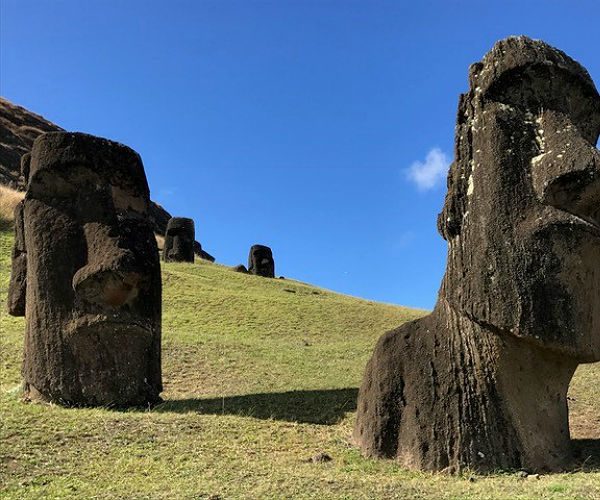 5. The Moai ‘walked’ across the island
How they were moved from the volcanic quarry to the perimeter of the 163 sq km island where the tribes were living was explained by the eminent American archaeologist Terry Hunt. He discovered that the base of the Moai was carved to allow it to lean forward slightly, which allowed a pendulum walking action. Teams on either side would control the swaying motion as it walked pivoting from side to side and a team at the back stopped the edifice from toppling over. In 2012 he proved his theory with a 5 ton replica and with just 18 men ‘walked’ the Moai 100m in just 40 minutes.
5. The Moai ‘walked’ across the island
How they were moved from the volcanic quarry to the perimeter of the 163 sq km island where the tribes were living was explained by the eminent American archaeologist Terry Hunt. He discovered that the base of the Moai was carved to allow it to lean forward slightly, which allowed a pendulum walking action. Teams on either side would control the swaying motion as it walked pivoting from side to side and a team at the back stopped the edifice from toppling over. In 2012 he proved his theory with a 5 ton replica and with just 18 men ‘walked’ the Moai 100m in just 40 minutes.
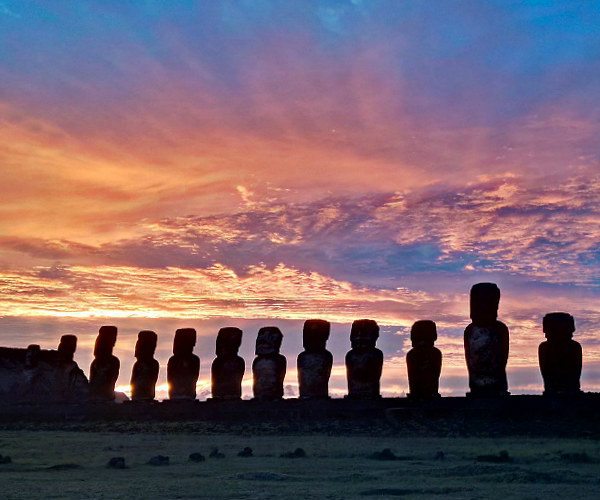 6. The Rapa Nui population declined to just 111
As the competition to create the largest and therefore most powerful Moai intensified so the tribes sabotaged their rival’s Moai. After all the Moai had fallen the Rapa Nui people believed they were no longer protected and so it proved. The Spanish and the mainland Chileans came to Rapa Nui and took many of the locals as slaves, leaving behind disease, sickness and infection, by 1888 the 20,000 population had been decimated to just 111.
6. The Rapa Nui population declined to just 111
As the competition to create the largest and therefore most powerful Moai intensified so the tribes sabotaged their rival’s Moai. After all the Moai had fallen the Rapa Nui people believed they were no longer protected and so it proved. The Spanish and the mainland Chileans came to Rapa Nui and took many of the locals as slaves, leaving behind disease, sickness and infection, by 1888 the 20,000 population had been decimated to just 111.
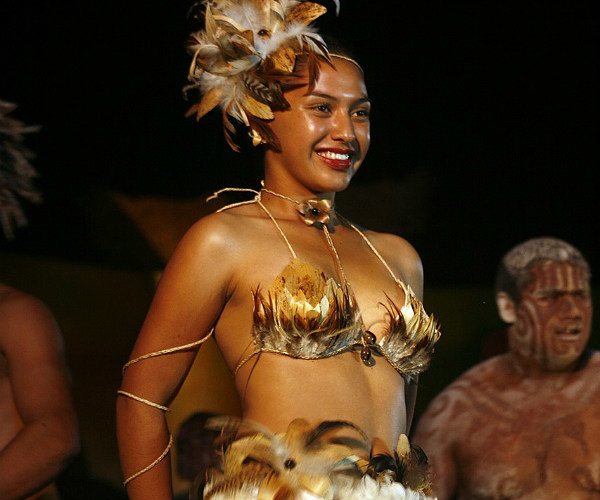 It wasn’t until 1956 when Thor Heyerdahl, who sailed the Kon-Tiki expedition, came to the island that the first Moai was restored. It was re-erected where the Polynesian king first came ashore and discovered the island. Since then some of the ‘Abu’ platforms have been recreated and Moai returned to their dignified position protecting the remaining Rapa Nui people on the island.
David Moore is Author of ‘Turning Left Around the World’. Published by Mirador and available from Amazon, it is an entertaining account of David and his wife’s travel adventures – often intriguing, frequently funny and occasionally tragic.
If you would like to be a guest blogger on A Luxury Travel Blog in order to raise your profile, please contact us.
It wasn’t until 1956 when Thor Heyerdahl, who sailed the Kon-Tiki expedition, came to the island that the first Moai was restored. It was re-erected where the Polynesian king first came ashore and discovered the island. Since then some of the ‘Abu’ platforms have been recreated and Moai returned to their dignified position protecting the remaining Rapa Nui people on the island.
David Moore is Author of ‘Turning Left Around the World’. Published by Mirador and available from Amazon, it is an entertaining account of David and his wife’s travel adventures – often intriguing, frequently funny and occasionally tragic.
If you would like to be a guest blogger on A Luxury Travel Blog in order to raise your profile, please contact us.Did you enjoy this article?
Receive similar content direct to your inbox.


Oooh finally some real reporting on Easter Island, thanks Paul..! I didn’t like how some previous misinformation went viral (e.g. the Moai have bodies! – of course they do, the ones still dug in the soil at Rano Raraku are unfinished!)
I enjoyed reading David’s post about Easter Island, it brought back memories of my favorite place on Earth.
Many thanks Veronkia, I am delighted you enjoyed the post.
it is indeed an extraordinary place with a wonderful although sad story to tell.
Helene and I had a memorable time on the island. Despite it’s difficult past, as you may know the culture is strong. As Tito our guide said “I live on Rapa Nui, I speak Rapa Nui, I am Rapa Nui”
We look forward to returning one day
I agree that you don’t see alot of Eastern Island in a good written and formatted post like this one.
Thank you for sharing
Thanks Anders, look out for my next post on another remarkable island – The Galapagos.
Regards
David
The remotest island sounds just amazing. It is truly stunning too those landscapes are beautiful. I love the theatre style seating in the vehicle there’s nothing more frustrating than missing simething when someone’s head gets in the way and I would love to be in the back seat. The population of just 111 is crazy but what lucky people. These are some great facts and I learnt a lot about a part of the world I didn’t even know I needed to visit thank you.
Many thanks Betty, I’m so pleased you enjoyed the Blog on Easter Island.
It may be remote but really worth the travel time to get there
Happy travels
David
An absolutely fascinating collection of unusual facts. A follow-up piece would be fascinating. There are some unanswered questions. Has the population recovered from the dip to 111? Is there anything to commemorate Thir Heyerdahl’s visit? Maybe a museum commemorating his voyages? And what does the future hold for Easter Island? Any further developments planned to make the huge journey even more worthwhile?
Heyerdahl was an audacious dilettante whose only contribution to the island’s heritage was publicity.
Thanks James, some good thoughts / questions…
I will speak with Paul about a follow up
Happy travels
David
Never knew this place had conspiracy theories attached nor a possible alien invasion all those years ago. It definitely makes me view it a different way with a little more mystery! Makes sense it has the longest runway if there’s such open space there. I like that it’s so remote, it’s the kind of place I’d like to live now that I’m sick of city living. Give me fresh air, nature and a bit of quiet! The Moai statues are probably what I most associate with Easter Island. But I hadn’t known the British stole one. Were they not forced to give it back in more recent times, or are the people there okay with it being on display in the British Museum? They’re such incredible sculptures, very distinctive and you can’t help but be amazed at them.